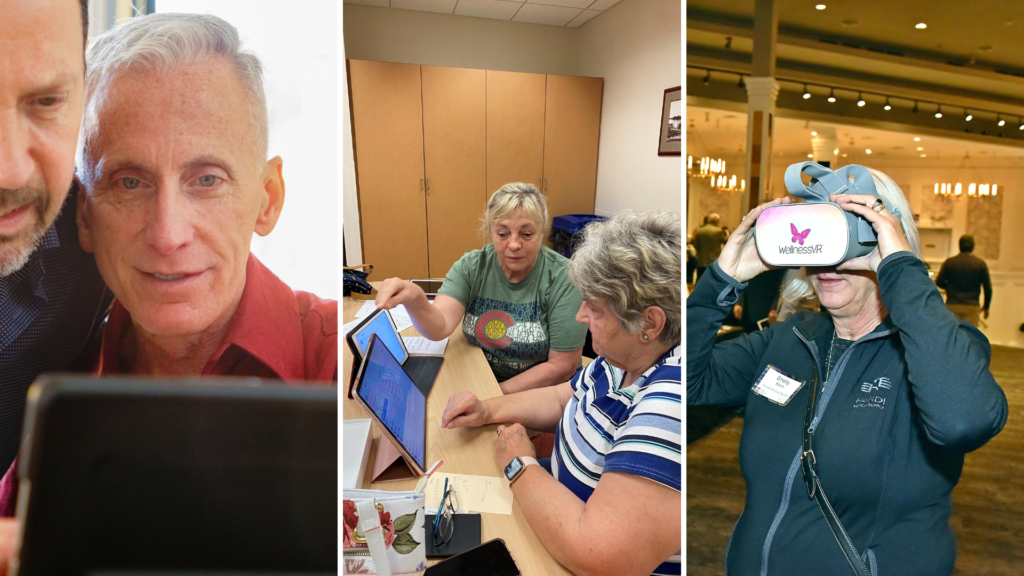The “digital divide” has become an increasingly critical conversation in today’s ever-shifting tech landscape, especially in wake of the past year and half’s isolating pandemic. The term refers to the gap between those that have access to modern communications technology, and those that do not or have restricted access. This includes telephones, computers, personal devices, and internet connectivity.
If our time quarantined has taught us anything, it’s that the ability to effectively navigate digital technology has become a key component of fully participating in society. If we do not make efforts to ensure everyone has access and training, we effectively shut them out from society. In the case of seniors in our community, this inflates an already worrisome trend of isolation and loneliness.

Debunking Myths
There seems to be a perception that when it comes to older adults, they’re simply uninterested or unwilling to learn and adopt the newer technologies so many of the younger population takes for granted.
According to a study by AARP, over the last five years the share of US seniors using technology has increased to 75%. Despite this growth only 25% of seniors report feeling ‘very confident’ in using technology, while 73% say they need help when setting up or using a new electronic device.
These findings suggest that the problem doesn’t lie in an attitude of unwillingness to adapt, but rather the lack of resources that offer senior-focused tech services that combine not only accessibility, affordability, and support, but also training.
Barriers to Entry
Many older adults simply aren’t aware these solutions are available to them, let alone how to access or install them effectively. Simply put, all the technological advancements empowering independence for older adults are useless without knowing how to implement them and being given the proper education.
Other significant barriers to access for lower-income seniors are low speed internet or outdated equipment, or lack of equipment altogether. Rather than perpetuating myths about generational differences, we should be working to bridge the gap by building technical literacy for those who didn’t grow up using the tech so many are naturally accustomed too.
Bridging the Gap
With greater investment in creating accessibility and tailored digital training, technology has the potential to become a powerful tool for reducing loneliness among older adults, empowering us to connect, create, and contribute online as we age. In addition, much of the tech taken for granted by younger generations can significantly improve the ability to age in place as long as possible.
We can work together to bridge the “digital divide” by building community resources that meet people where they are and then provides them with the right level of training to take advantage of the tools keeping us all meaningfully connected.
Senior Community Services is a local nonprofit that helps older adults and caregivers navigate aging to maintain independence and quality of life.




